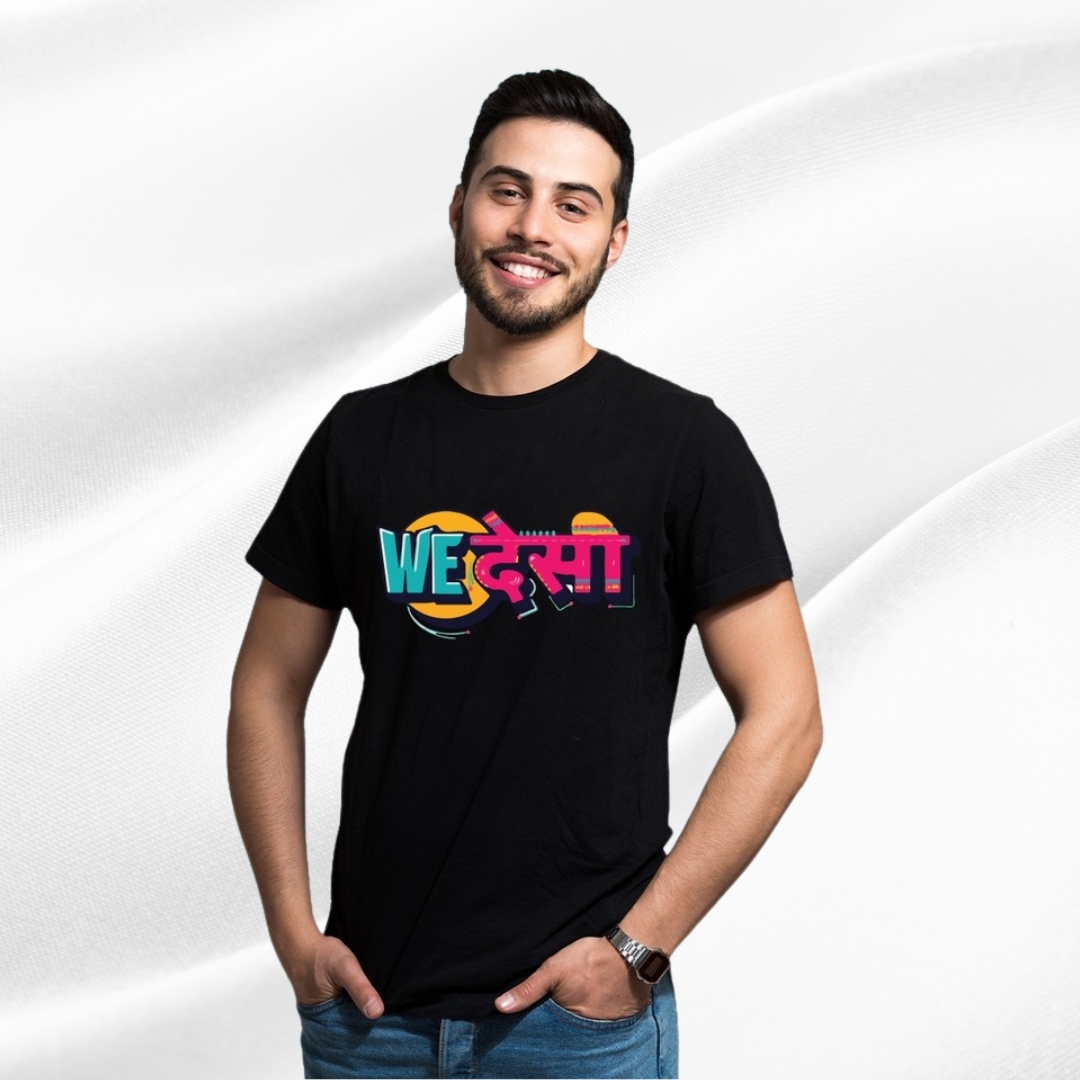What Fabrics Are Best for Desi T Shirts?

Strong 8k brings an ultra-HD IPTV experience to your living room and your pocket.
Choosing the right fabric for Desi T-shirts lively and culturally-influenced wardrobe keys embodying traditional South-Asian aesthetics blended with the ease of the modern-day casual is a matter of importance. It is not only a matter of beautiful prints or elaborate embroidery but of comfort, durability, and how favourable the material is for the climate and occasion. Whether you are flaunting one with intensive phulkari motifs or one with a simple kurta-inspired design, the fabric will contribute to how it feels on your skin and how long it lives in your wardrobe. Here, let us delve into some of the best fabrics for Desi T-shirts and learn why they matter.
Cotton:
When it comes to Desi T-shirts, cotton rules the roost, and with good reason. Soft and breathable by nature, it is also adaptable in that it can be worn anytime or anywhere, depending on the type of layering employed which fits perfectly in the hot, humid climates normally found within South Asia. Pure cotton T-shirts are casual day wear-i.e. airiness allows comfort on a bustling day outdoors or at a family get-together. The moisture absorption of cotton does come in handy, especially if you are in a place where summertime feels like an eternal journey.
Cotton makes a wonderful canvas for more traditional prints like block patterns or digital representations of paisley and mandala designs for Desi T-shirts. Cotton is very good with dyes, so turmeric yellows, deep maroons, and emerald greens hold fast and are brilliant and vibrant without fading too quickly. Try to look for 100% cotton or combed cotton for a smoother, polished feel. Lightweight cotton t-shirts (150-180 GSM) fit very comfortably, whereas heavier cotton fabric (200 GSM) lends a good amount of structure for a semi-formal look complemented with detailing like mirror work or thread embroidery.
Linen:
The linen fabric will work for an elevated and free-spirited Desi T-shirt. Linen is derived from the flax plant, which is lightweight, airy, and very slightly textured—calling to mind understated elegance in all its glory. It allows one to wear the T-shirt also as a statement piece—maybe a bright white T-shirt with bold gold foil prints, or a muted beige shade with fine zari details. The sheen of linen and its naturally slubby surface will befit a rustic charm, which goes hand-in-hand with traditional crafts.
The downside is that linen easily assumes wrinkles, which can be a deal-breaker for some people. But that's part of its relaxed look for many people. Brilliant for summer weddings or festive brunches, especially in warmer climes, as it dries quickly and aerates. Best of both worlds: a cotton-linen mix if you want linen's elegance with cotton's softness and durability. A touch of 70% cotton and 30% linen is just the right mix - easy maintenance yet chic looking.
Madal:
Modal is a semi-synthetic fibre made from beech tree pulp-is a very upcoming fabric in the world of Desi T-shirts. It is very soft- once you touch this fabric, you will know what we mean by buttery soft against the skin; and its exquisite fall makes even simple silhouettes look classy. Let's not forget that Modal is breathable, making this fabric a good choice in sticky weather conditions. Besides, because Modal also resists shrinking and fading, it protects your T-shirt from a wash experience where it loses energy and time, thus making it great for Desi T-shirts with colourful digital prints or fine embroidery that you would love to pamper.
Modal blends are steadily gaining in popularity, especially ones with cotton. An equal mix of cotton and modal is natural, silky, and breathable for the fitted Desi T-shirt that glides over the body rather than tightly hugging it. An ideal pick for stylish comfort. Imagine a deep navy modal T-shirt with delicate gotapatti work that is sophisticated enough to be chic for a coffee jaunt or an evening out.
Polyester:
polyester has been getting a bad name for itself, but hold on for a second—it does find a place in the Desi T-shirt-in-the-line-up. This synthetic fabric is durable, resistant to wrinkles, and budget-friendly, which makes this material perfect for everyday wear or done in masses. As well, it boasts of holding bold and bright prints quite well; hence, you will mostly spot polyester Desi T-shirts with loud graphic patterns or festival-ready slogans on them.
What is the catch? A bigger downside is that it might just not be your first choice for sizzling hot days as it isn't as breathable as would be the case for natural fabrics. It's a cotton-polyester mix redundancy splintered as: 60% cotton, and 40% polyester, and here, it gives something of an individual compromise between comfort and performance. These blends are always less susceptible to getting stretched, which is good if your Desi T-shirt has heavy embroidery or appliqué, which requires the structure to support it. Pick your lightweight polyester blends, if you want a low-maintenance but still sharp-looking thing.
Bamboo:
The eco-conscious probably won't be surprised to learn that bamboo fabric is the answer to pleasantness; soft, hypoallergenic, with natural moisture-wicking and antibacterial properties—ideal for sensitive skin or days-long activity. These are the feelings of bamboo T-shirts, which carry that special sheen to mimic silk but without the added fragility. Eco-pleasing—bamboo hardly grows fast and requires fewer resources than cotton.
Bamboo is exceptional in presenting earthy tones and subtle prints, as in the case of Desi T-shirts. The muted mustard bamboo tee with minimal Ajrakh-inspired motifs is both modern and very much rooted in tradition. It's fabulous for outdoor events or travel and keeps you fresh as well as stylish. For durability, try to find 100% bamboo or a bamboo blended with cotton.
So, what do we say is the fabric of choice for Desi T-shirts?
It depends on what is most important for you. Cotton is used in run-of-the-mill creations that are cheap, comfortable, and available almost everywhere. Linen adds a touch of sophistication, dead-on for that special occasion, while modal is the cheap bastard’s luxury. Polyester blends are mercilessly practical, whereas bamboo caters to the eco-amist. Look at the weather when choosing, styling, and how much care you are prepared to put in. A Desi T-shirt is not just about clothing. It represents culture and character, and the fabric you choose sets the mood.Reference Url :- bloggang.com
Note: IndiBlogHub features both user-submitted and editorial content. We do not verify third-party contributions. Read our Disclaimer and Privacy Policyfor details.




